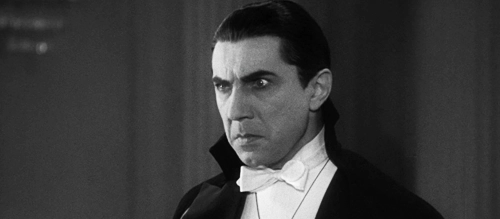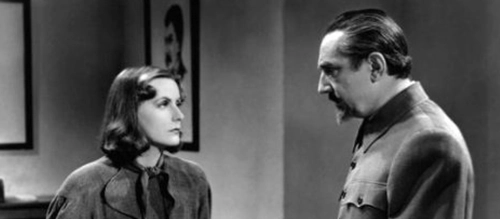Where to Start with Bela Lugosi
There is a point in time where iconic screen performer Bela Lugosi becomes incapable of being an actor. He is unable to slip into roles that audiences will believe, unable to convince an audience that he is anyone except himself. Whatever guise he dons, whatever character he slips into like a cloak, he is still Bela Lugosi. You see Bela Lugosi, you hear Bela Lugosi. Much of this has to do with his accent. A Hungarian born in Lugos on October 20th, 1886, he adopted the stage name Lugosi as a tribute to his birthplace. After fighting in the army during the first world war, he went on to act in silent films until the mid-1920s when he moved to the United States. It was here that he developed his specific way of speaking English, learning many of his first parts phonetically, giving his speech a deep, exotic quality.
Becoming known for his portrayal of Count Dracula in the 1927 Broadway adaptation of Bram Stoker’s novel, Lugosi found himself in a slew of Universal’s monster movies (and Hammer’s The Mystery of the Marie Celeste, only their second film, and their oldest surviving), often alongside Boris Karloff, Glenn Strange, and Lon Chaney Jr. By the late 1930s, he had begun to develop health issues as a result of his wounds sustained during the war. Leading roles declined, his efforts to get out of a typecast role never truly happened. He struggled to perform without morphine and, when coupled with his alcoholism, the work began to dry up. His final appearance was in the much-panned Plan 9 From Outer Space, posthumously. He passed on August 16th 1956, having gone upstairs for a nap and never woken up. He’d married five times, had one son, and was buried in Los Angeles at the age of 73.
Lugosi was a giant of the screen, and remains so to this day. Once seen and heard, never forgotten, much like Vincent Price or Christopher Lee would be in later years. His is a presence that transcends the films he starred in, goes beyond his horror staples, and is still adored by millions to this day. If you’re wondering where to start with Bela Lugosi, here are some suggestions for you.
1. Dracula (1931)

The role that brought Bela Lugosi to the United States remains his most iconic, important, and influential.
When Carl Laemmle Jr of Universal took on Dracula to develop their first talking horror picture, it was Lugosi they asked to reprise his role after trying for several other actors. Stepping back into the Count’s shoes wouldn’t be too strange; the film was based on the stage play adaptation he had starred in, and Edward Van Sloan (who had played Van Helsing on stage alongside Lugosi) also returned to face off against his nemesis.
With his thick, stilted English, Lugosi’s Dracula is a vast departure from the novel, where it is stressed that the Count tried as much as possible to speak fluent English (a take that Christopher Lee would adopt when Hammer Films made their version in 1958). Yet despite this, it is Lugosi’s voice we think of when we think of the character, and of vampires in general. When we act out Dracula as kids, or grown-up kids, we all do Lugosi’s accent. His floating mannerisms, almost gliding across the floor with his cloak spread out like bat’s wings, bring the audience into his world. His piercing stare holds you captive. Anyone else pronouncing some of Dracula’s lines would have failed to make quite the impression on the public consciousness. “Listen to them. Children of the Night. What music they make.” Would it sound as menacing, as chilling, in any other voice than Lugosi’s? Others have tried, and they have all failed.
His opening remark in the film – “I am… Dracula” – came to define his entire career. When he passed away, his family decided to bury him in his Dracula cloak. The vampire made him famous, but it shadowed his entire life and legacy. His performance might not have had any blood or fangs, but the vampire fed on him throughout. This character, if nothing else, will ensure he lives forever, but it doomed its hero in other ways, being both a blessing and a curse. If that isn’t a potent-enough metaphor in the film industry, nothing is.
2. White Zombie (1932)

The very next year, Lugosi would unwillingly play his role in cementing another legendary monster on the screen: the zombie. Back in those days, zombies were still very much a tradition of voodooism, an import on the slave ships from African nations, now often depicted in places such as Haiti (see Wes Craven’s The Serpent and The Rainbow from 1988 for a more violent depiction), and it would take films like 1967’s Plague of the Zombies (which itself was inspired by the vampires of Richard Matheson’s novel “I Am Legend”) to give Romero the impetus to really define the modern zombie in 68’s Night of the Living Dead. In 1932, however, zombies were still a fairly new concept to western audiences. They were people brought back to life by magic to do the summoner’s will, and in this case, it’s Lugosi wanting them to turn the mills and work as slave labour.
Often regarded as the first feature-length zombie film, White Zombie plays very simply as an allegory for black slavery. A white aristocrat forces black men to work the land for the profit of the landowner. And the film is, for better or for worse, not remembered for much other than Lugosi’s powerful, mesmerising stare. There hasn’t been a pair of eyes quite like them since, transfixing the viewer without trying very hard. When he puts in the malice, it shows.
Up in his castle, Lugosi’s Murder Legendre (yes, that’s really the character’s name) is a scheming, plotting spider of a man, twisting the love of the central characters for each other into murder. He is the whisperer in the ear, not too far removed from Ann Radcliffe’s evil monk Schedoni in her classic gothic novel “The Italian” (1795). He might not have liked being typecast into sinister, evil characters, but when he really put his heart and soul into it, he outshone everyone and everything around him. Some of the other acting isn’t great in White Zombie, but its air of malice is achieved by some decent directing and Lugosi’s impossible presence.
3. Ninotchka (1939)

Lugosi was cast as so many sinister villains in horror and science fiction (his role in the influential 1939 serial ‘The Phantom Creeps’ is one of his best) that it is unfortunate he didn’t get the chance to spread his wings further. Despite fourth billing in the end credits of Ninotchka, a romantic comedy following Greta Garbo’s Comrade Ninotchka as she falls in love with Melvyn Douglas in Paris against her loyalties to communist Russia, Lugosi only appears in one scene near the end, and only for three minutes or so. There are other characters that appear pretty much throughout the entirety of the film that are underneath Lugosi’s name. In Ninotchka, he was on the very verge of breaking out from his typecast role and into the mainstream.
With only a few moments of screentime, it is clear to see what Lugosi could have been if he had been given the chance to properly go for it. That is not to say that his roles in films such as Son of Frankenstein and The Wolf Man aren’t great, but in three minutes he brings class, presence, and power to a simple scene. His Commissar Razinin is relaxed yet stern, completely in control of the scene. His eyes still hold menace, his stance still holds power. Hollywood star Greta Garbo trembles before him. Even this small glimpse of him as something other than a horror bit-part shows what a talented actor he was.
This was his chance, a break that never came to be. Despite the film receiving four Oscar nominations (Best Picture, Best Actress, Best Original Story, and Best Screenplay), it did nothing for his career. Under a decade later he was reprising his role as Dracula in Abbot and Costello Meet Frankenstein, a fun spoof by Universal of their own films. One wonders what might have happened to Lugosi’s career if more people had taken notice of this scene-stealer and stretched it out over an entire film, or even a string of them. Horror was grateful to have him, but for the rest of the world it’s a tragedy they never got him.

